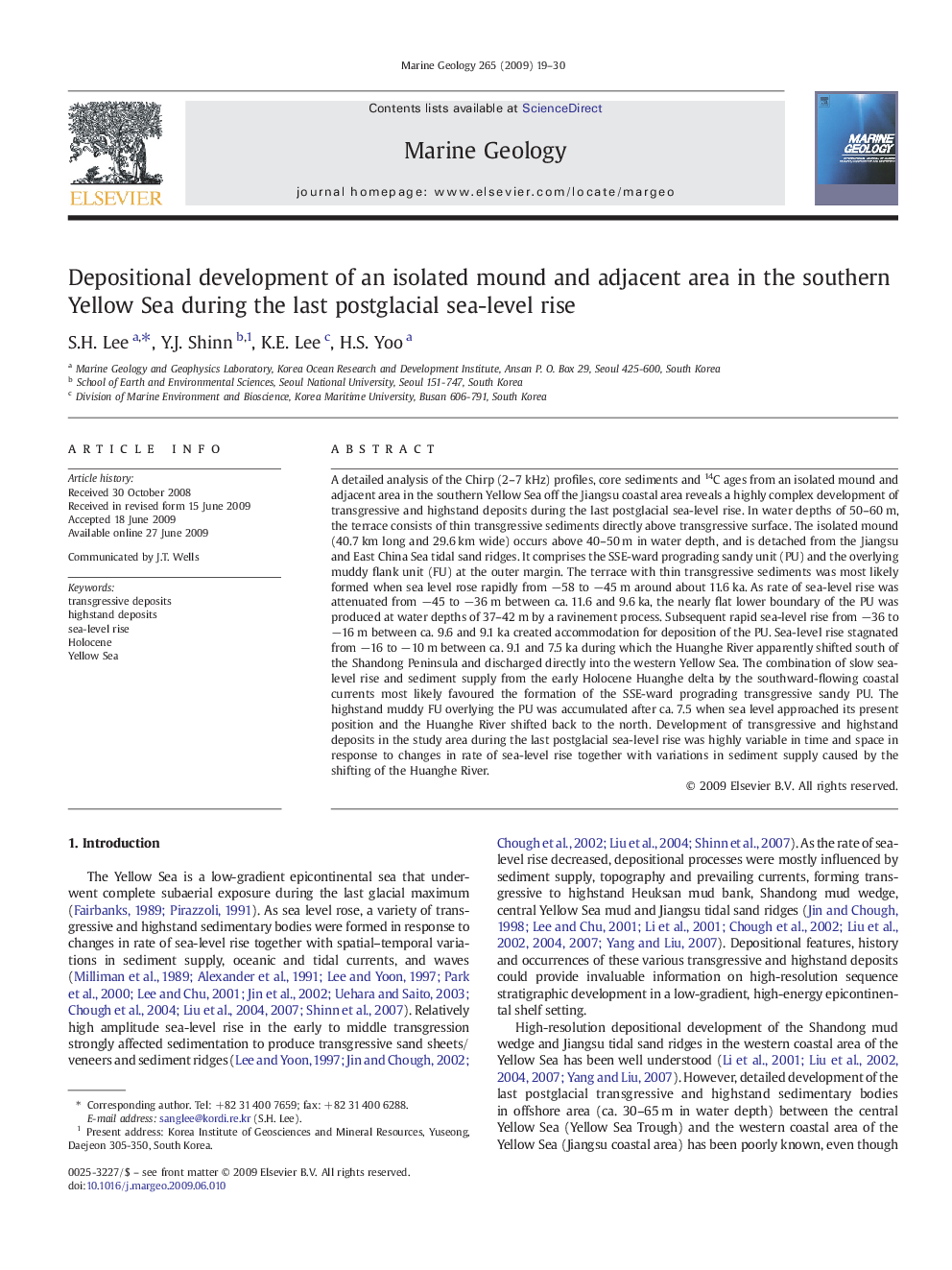| کد مقاله | کد نشریه | سال انتشار | مقاله انگلیسی | نسخه تمام متن |
|---|---|---|---|---|
| 4719092 | 1639160 | 2009 | 12 صفحه PDF | دانلود رایگان |

A detailed analysis of the Chirp (2–7 kHz) profiles, core sediments and 14C ages from an isolated mound and adjacent area in the southern Yellow Sea off the Jiangsu coastal area reveals a highly complex development of transgressive and highstand deposits during the last postglacial sea-level rise. In water depths of 50–60 m, the terrace consists of thin transgressive sediments directly above transgressive surface. The isolated mound (40.7 km long and 29.6 km wide) occurs above 40–50 m in water depth, and is detached from the Jiangsu and East China Sea tidal sand ridges. It comprises the SSE-ward prograding sandy unit (PU) and the overlying muddy flank unit (FU) at the outer margin. The terrace with thin transgressive sediments was most likely formed when sea level rose rapidly from −58 to −45 m around about 11.6 ka. As rate of sea-level rise was attenuated from −45 to −36 m between ca. 11.6 and 9.6 ka, the nearly flat lower boundary of the PU was produced at water depths of 37–42 m by a ravinement process. Subsequent rapid sea-level rise from −36 to −16 m between ca. 9.6 and 9.1 ka created accommodation for deposition of the PU. Sea-level rise stagnated from −16 to −10 m between ca. 9.1 and 7.5 ka during which the Huanghe River apparently shifted south of the Shandong Peninsula and discharged directly into the western Yellow Sea. The combination of slow sea-level rise and sediment supply from the early Holocene Huanghe delta by the southward-flowing coastal currents most likely favoured the formation of the SSE-ward prograding transgressive sandy PU. The highstand muddy FU overlying the PU was accumulated after ca. 7.5 when sea level approached its present position and the Huanghe River shifted back to the north. Development of transgressive and highstand deposits in the study area during the last postglacial sea-level rise was highly variable in time and space in response to changes in rate of sea-level rise together with variations in sediment supply caused by the shifting of the Huanghe River.
Journal: Marine Geology - Volume 265, Issues 1–2, 1 September 2009, Pages 19–30